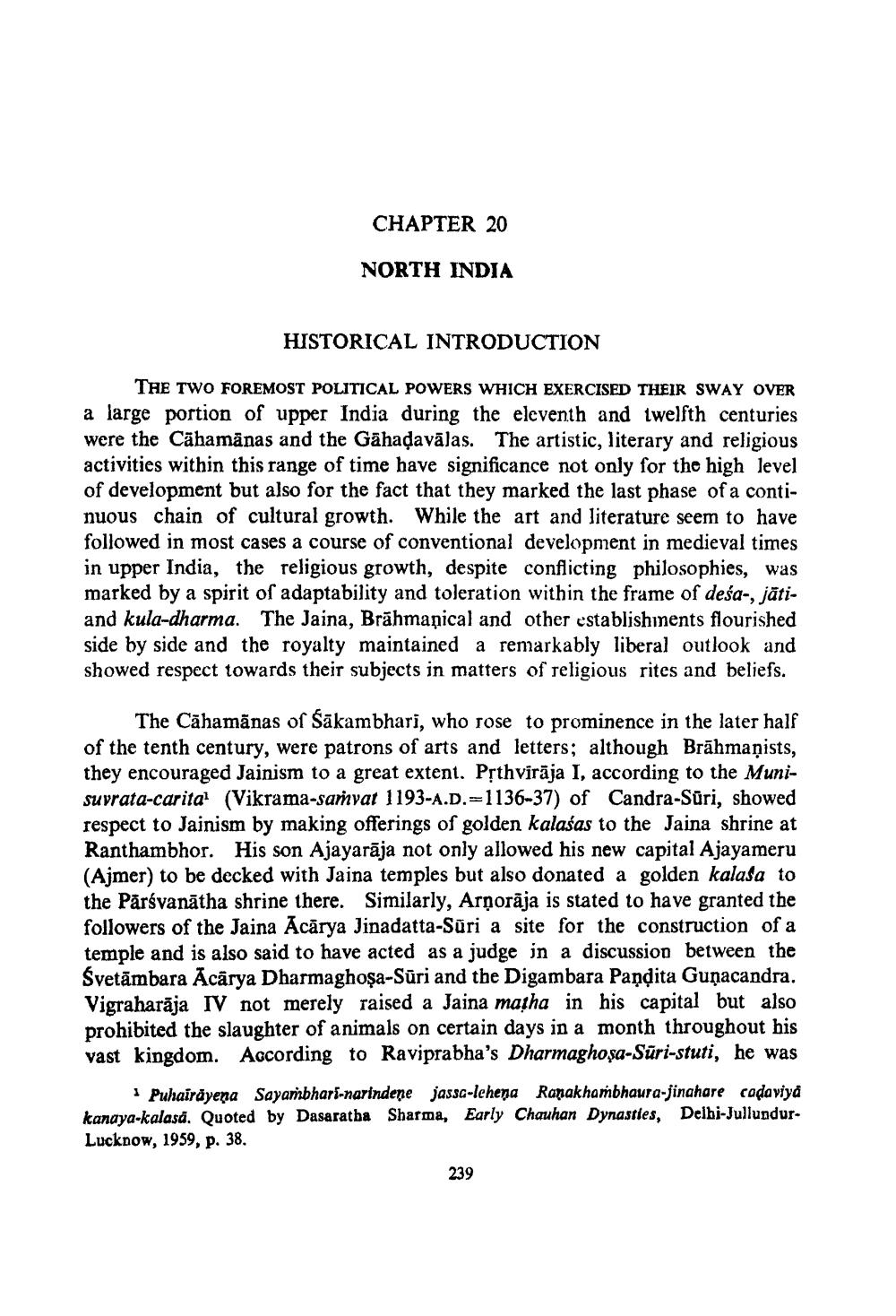________________
CHAPTER 20
NORTH INDIA
HISTORICAL INTRODUCTION
THE TWO FOREMOST POLITICAL POWERS WHICH EXERCISED THEIR SWAY OVER a large portion of upper India during the eleventh and twelfth centuries were the Cāhamānas and the Gähadavālas. The artistic, literary and religious activities within this range of time have significance not only for the high level of development but also for the fact that they marked the last phase of a continuous chain of cultural growth. While the art and literature seem to have followed in most cases a course of conventional development in medieval times in upper India, the religious growth, despite conflicting philosophies, was marked by a spirit of adaptability and toleration within the frame of deśa-, jātiand kula-dharma. The Jaina, Brāhmaṇical and other establishments flourished side by side and the royalty maintained a remarkably liberal outlook and showed respect towards their subjects in matters of religious rites and beliefs.
The Cāhamānas of Sākambhari, who rose to prominence in the later half of the tenth century, were patrons of arts and letters; although Brāhmaṇists, they encouraged Jainism to a great extent. Pșthviräja I, according to the Munisuvrata-carita (Vikrama-saṁvat 1193-A.D.=1136-37) of Candra-Sūri, showed respect to Jainism by making offerings of golden kalaśas to the Jaina shrine at Ranthambhor. His son Ajayarāja not only allowed his new capital Ajayameru (Ajmer) to be decked with Jaina temples but also donated a golden kalasa to the Pārsvanātha shrine there. Similarly, Arnorāja is stated to have granted the followers of the Jaina Ācārya Jinadatta-Sūri a site for the construction of a temple and is also said to have acted as a judge in a discussion between the Svetāmbara Ācārya Dharmaghosa-Sūri and the Digambara Pandita Gunacandra. Vigraharāja IV not merely raised a Jaina maiha in his capital but also prohibited the slaughter of animals on certain days in a month throughout his vast kingdom. According to Raviprabha's Dharmaghoşa-Suri-stuti, he was
Puhairāyena Sayambhari-narindene jassa-lehena Ranakhambhaura-jinahare cadaviya kanaya-kalasa. Quoted by Dasaratha Sharma, Early Chauhan Dynasties, Delhi-Jullundur. Lucknow, 1959, p. 38.
239




